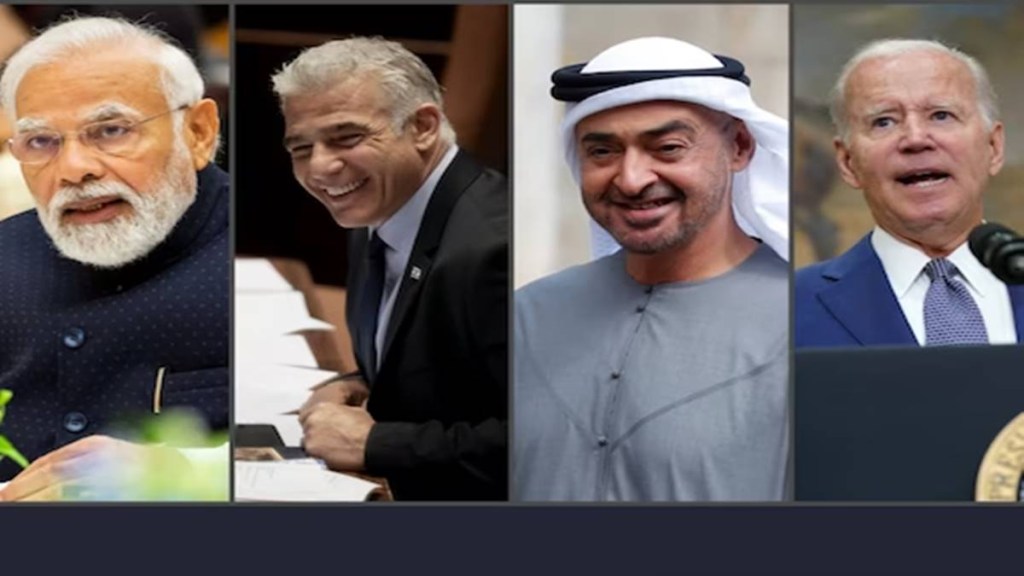By Dr Sreshtha Chakraborty
The Abraham Accord which led to the normalization of Israel’s relations with Arab Gulf countries facilitated the formation of an informal Mini lateral grouping I2U2. It is perceived often as an extension of the US Indo-Pacific strategy in the Western Indian Ocean Region. China’s recent and systematic military and economic ascent in the Middle East has spurred the US to navigate new channels to blunt the growing clout of China in the region which traditionally has thrived under strong US security architecture. This shifting sand and China’s recent brokerage of the Saudi-Iran deal have renewed US’s aspiration to establish new security footholds. The Indian Ocean is also China’s “Primary theatre of transit” and over 40 per cent of China’s energy requirements come from Middle Eastern countries. Chinese presence in the region, even if it is relatively new, it has outpaced the US in terms of influence in recent times.
On the other hand, the Indian Ocean Region provides a “Theater of Opportunities” for India. India is shedding its erstwhile negligence towards the Indian Ocean region that covers 95 per cent of its trade and 80 per cent of its energy routes and is actively driven by countering China’s expanding foothold in the region. The I2U2 grouping, which is relatively a new vehicle in India-US cooperation, demonstrates a new scope to counter China beyond the Indo-Pacific and into the Middle East. The I2U2 though is not completely focused to counter China as both members like UAE and Israel enjoy close commercial cooperation with China. However, the recent meeting attended by India’s National Security Advisor Ajit Doval and his counterpart unfolded India’s ambitious joint infrastructure project that would connect the regions via rail, roads and seaports. US’s interest in the project is driven to counterbalance Chinese presence in the region and India’s interest is to secure its trade route for the future.
It is impossible for any single superpower to control the entire region like colonial powers once did, but this doesn’t reduce the region’s significance. Going back to history, the US and Russia were the two key players in the region through the cold war. The US presence reduced eventually and was mostly concentrated on supporting its mission in Afghanistan and the Middle East. The US Indo-pacific strategy has again brought back the Indian Ocean into the spotlight after a prolonged gap with no serious competition in the region following the cold war. The Grouping in the Indian Ocean Region is getting extremely complex in the new security architecture. China has emerged as a strong partner for the island and littoral countries of the Indian Ocean. The Belt and Road Initiative is carefully crafted to further collaborate on economic and military issues by portraying itself as an important leader in security architecture. Even though China has invested in bilateral relations with the Indian Ocean Region, there is still a growing trust deficit owing to its debt-trap diplomacy and coercive methods to pursue its national and military interests. China’s presence also challenges the other major power in the region, such as India. By establishing its new hegemony, China also reflects its positional status as a significant alternative power to the US.
The relations between India and China largely driven by border disputes, diplomatic frictions and mistrust now also become competitive in the Indian Ocean region. Besides, the growing need for energy has shifted their attention to the western Indian Ocean region as its geostrategic relevance lies in its energy reserves and transportation for maritime trade. India’s role in the future crucial institutional architecture is very crucial and the new connectivity project is a reiteration and proactive move to strengthen India’s strategic interests and concerns.
The author is Assistant Professor , Amity University, Noida.
(Disclaimer: Views expressed are personal and do not reflect the official position or policy of Financial Express Online. Reproducing this content without permission is prohibited.)

